-
 Efficient CoM Motion Planning for Quadruped Robots’ Quasi-Static Walking
Efficient CoM Motion Planning for Quadruped Robots’ Quasi-Static Walking -
 Intelligent Robust Motion Control of Aerial Robot
Intelligent Robust Motion Control of Aerial Robot -
 A New Dual Steering System in a Compact Tractor
A New Dual Steering System in a Compact Tractor -
 Revolutionizing Patient Care: A Comprehensive Review of Recent Advances in Flexible Printed Heaters for Wearable Medical Applications
Revolutionizing Patient Care: A Comprehensive Review of Recent Advances in Flexible Printed Heaters for Wearable Medical Applications
Journal Description
Actuators
Actuators
is an international, peer-reviewed, open access journal on the science and technology of actuators and control systems published monthly online by MDPI.
- Open Access— free for readers, with article processing charges (APC) paid by authors or their institutions.
- High Visibility: indexed within SCIE (Web of Science), Scopus, Inspec, and other databases.
- Journal Rank: JCR - Q2 (Engineering, Mechanical) / CiteScore - Q2 (Control and Optimization)
- Rapid Publication: manuscripts are peer-reviewed and a first decision is provided to authors approximately 17.7 days after submission; acceptance to publication is undertaken in 1.9 days (median values for papers published in this journal in the second half of 2024).
- Recognition of Reviewers: reviewers who provide timely, thorough peer-review reports receive vouchers entitling them to a discount on the APC of their next publication in any MDPI journal, in appreciation of the work done.
Impact Factor:
2.2 (2023);
5-Year Impact Factor:
2.4 (2023)
Latest Articles
Analysis and Optimization Design of a Brushless Power Feedback PM Adjustable Speed Drive with Bilayer Wound Rotor
Actuators 2025, 14(5), 241; https://doi.org/10.3390/act14050241 (registering DOI) - 12 May 2025
Abstract
A novel brushless power feedback permanent magnet adjustable speed drive (BLPF-PMASD) is developed for the energy-saving of a large power electrical machine drive system in this paper. It can transfer the slip power between the input and output shafts to a stator and
[...] Read more.
A novel brushless power feedback permanent magnet adjustable speed drive (BLPF-PMASD) is developed for the energy-saving of a large power electrical machine drive system in this paper. It can transfer the slip power between the input and output shafts to a stator and then transmit it back to the power grid, achieving higher drive efficiency and stability. First, the topology feature, operation principle, and power feedback mechanism of the proposed drive are clearly illustrated. Second, a multi-objective optimization design method suitable for all working conditions is proposed to provide an effective design means for this type of adjustable speed drive with power feedback. Finally, the electromagnetic performance of the optimized drive is analyzed by using the finite element method (FEM) to demonstrate the effectiveness and superiority of the proposed drive.
Full article
(This article belongs to the Section High Torque/Power Density Actuators)
►
Show Figures
Open AccessArticle
Line-of-Sight Stabilization and High-Precision Target Tracking Technology of the Risley Prism System on Motion Platforms
by
Huayang Xia, Hongfeng Xia, Jinying Li, Yunxia Xia, Yihan Luo, Liangzhu Yuan, Haotong Ma, Piao Wen and Wenna Yuan
Actuators 2025, 14(5), 240; https://doi.org/10.3390/act14050240 - 9 May 2025
Abstract
The Risley prism system offers advantages such as compact structure and excellent dynamic performance, making it suitable for installation on static and motion platforms for target acquisition, aiming, and tracking. This paper presents a strapdown line-of-sight (LOS) stabilization method for the Risley prism
[...] Read more.
The Risley prism system offers advantages such as compact structure and excellent dynamic performance, making it suitable for installation on static and motion platforms for target acquisition, aiming, and tracking. This paper presents a strapdown line-of-sight (LOS) stabilization method for the Risley prism system on motion platforms. The method establishes the coordinate transformation between the Risley prism and the motion platform. Real-time platform attitude angles from an inertial measurement unit (IMU) are used to compute the direction cosine matrix, which, combined with the coordinate transformation, determines the target’s actual guided position in the Risley prism’s coordinate. The Risley prism’s rotational angles are then calculated based on the target’s actual guided position to ensure LOS stability and capture the target. After LOS stabilization, an image-based closed-loop tracking cascade control system that integrates a Risley prism and a fast steering mirror with a single image detector (IBCLTCR-F), is used to enable fast and high-precision target tracking. Experimental results demonstrate that the proposed method achieves disturbance rejection of −32.8 dB, −28.8 dB, and −17.3 dB for platform disturbances at 0.05 Hz, 0.2 Hz, and 0.5 Hz, respectively. Furthermore, compared to the Risley prism system, the IBCLTCR-F system improves the dynamic response capability of target tracking in the nonlinear region by a factor of 10 and reduces the tracking error by 70%.
Full article
(This article belongs to the Section Precision Actuators)
►▼
Show Figures

Figure 1
Open AccessArticle
Robust Continuous Sliding-Mode-Based Assistive Torque Control for Series Elastic Actuator-Driven Hip Exoskeleton
by
Rui Wang, Xiaoou Lin, Changwei Yin, Zhongtao Liu, Yang Zhang, Wenping Liu and Fuxin Du
Actuators 2025, 14(5), 239; https://doi.org/10.3390/act14050239 - 9 May 2025
Abstract
In this paper, a real-time assistive torque controller based on sliding-mode control is proposed for a Series Elastic Actuator (SEA)-driven lower limb assistive exoskeleton. To address the problem of the lack of buffering properties and the uneven torque output in traditional exoskeletons, a
[...] Read more.
In this paper, a real-time assistive torque controller based on sliding-mode control is proposed for a Series Elastic Actuator (SEA)-driven lower limb assistive exoskeleton. To address the problem of the lack of buffering properties and the uneven torque output in traditional exoskeletons, a novel SEA is designed for the hip joint lower-limb exoskeleton. This structure features excellent cushioning properties and smooth torque output. On this basis, to enhance the torque tracking performance of the hip joint exoskeleton, in this study, a robust composite control strategy is proposed, which can maintain accuracy in the presence of unknown external disturbances and model parameter inaccuracies. The strategy consists of an adaptive phase oscillator for outputting the phase of the gait, a single-peak curve to provide a reference assistive torque, and a low-level controller to track the torque. The low-level controller employs Continuous Sliding-Mode Control (CSMC) to obtain a continuous control law and utilizes an Extended State Observer (ESO) to estimate the lumped disturbance. It ensures that the tracking error is asymptotically convergent with minimized chatter. The closed-loop stability of the system is theoretically proven by the Lyapunov method. The validity of the proposed algorithm is validated on a designed exoskeleton.
Full article
(This article belongs to the Section Actuators for Robotics)
►▼
Show Figures
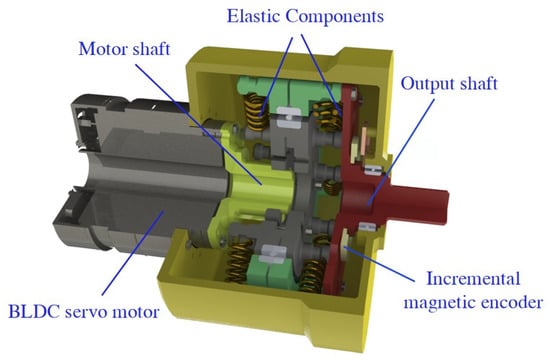
Figure 1
Open AccessArticle
An Adaptive BiGRU-ASSA-iTransformer Method for Remaining Useful Life Prediction of Bearing in Aerospace Manufacturing
by
Youlong Lyu, Qingpeng Qiu, Ying Chu and Jie Zhang
Actuators 2025, 14(5), 238; https://doi.org/10.3390/act14050238 - 9 May 2025
Abstract
In aerospace manufacturing, the reliability of machining equipment, particularly spindle bearings, is critical to maintaining productivity, as bearing health significantly constrains operational efficiency. Accurate prediction of the remaining useful life (RUL) of bearings can preempt failures, reduce downtime, and boost productivity. While conventional
[...] Read more.
In aerospace manufacturing, the reliability of machining equipment, particularly spindle bearings, is critical to maintaining productivity, as bearing health significantly constrains operational efficiency. Accurate prediction of the remaining useful life (RUL) of bearings can preempt failures, reduce downtime, and boost productivity. While conventional BiGRU-based models for bearing RUL prediction have shown promise, they often overlook handcrafted extracted time-series features that could enhance accuracy. This study introduces a novel model, BiGRU-ASSA-iTransformer, that integrates deep learning and handcrafted feature extraction to improve RUL prediction. The approach employs two parallel processes with a fusion step: First, a bi-directional gated recurrent unit (BiGRU) captures dynamic degradation features from raw vibration signals, with an adaptive sparse self-attention (ASSA) mechanism emphasizing short-term degradation cues. Second, 13 time-domain, frequency-domain, and statistical features, derived from traditional expertise, are processed using iTransformer to encode temporal correlations. These outputs are then fused via an attention mechanism. Experiments on the PHM 2012 and XJTU-SY datasets demonstrate that this model achieves the lowest prediction error and highest accuracy compared to existing methods, highlighting the value of combining handcrafted and deep learning approaches for robust RUL prediction in aerospace applications.
Full article
(This article belongs to the Section Actuators for Manufacturing Systems)
►▼
Show Figures
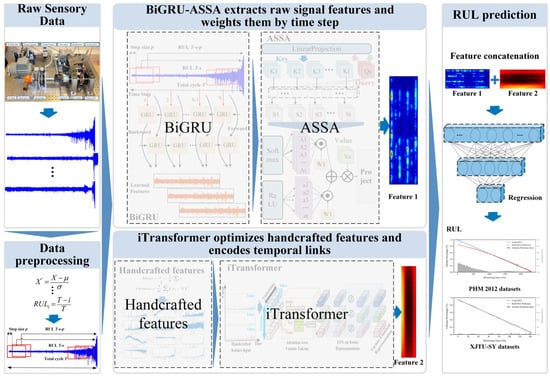
Figure 1
Open AccessArticle
Composite Adaptive Control of Robot Manipulators with Friction as Additive Disturbance
by
Daniel Gamez-Herrera, Juan Sifuentes-Mijares, Victor Santibañez and Isaac Gandarilla
Actuators 2025, 14(5), 237; https://doi.org/10.3390/act14050237 - 8 May 2025
Abstract
In this paper, an adaptive control scheme composed of an estimated feed-forward compensation and a PD control law with three mutually independent estimators is proposed for the tracking of desired trajectories in joint space for a robotic arm. One of the estimators is
[...] Read more.
In this paper, an adaptive control scheme composed of an estimated feed-forward compensation and a PD control law with three mutually independent estimators is proposed for the tracking of desired trajectories in joint space for a robotic arm. One of the estimators is used to identify inertial and geometrical parameters, while the others determine the two principal components of the friction phenomenon: the part whose magnitude is position-dependent but velocity-independent and the part whose magnitude is proportional to velocity. Next, the persistently exciting condition is satisfied for each regression matrix of the estimators in a way that is easier to prove than the classical structure. Then, uniform global asymptotic stability can be concluded for the tracking error, regardless of parametric convergence, by applying the direct Lyapunov theorem. This scheme has been applied experimentally for a robotic arm to verify the theoretical results. The experimental results yielded a better performance in both estimating the parameters and tracking, with a much simpler overall analysis than the alternatives consulted.
Full article
(This article belongs to the Special Issue Nonlinear Control of Mechanical and Robotic Systems)
►▼
Show Figures
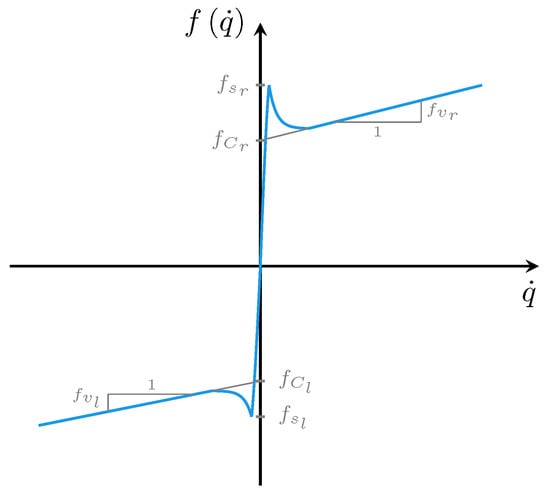
Figure 1
Open AccessArticle
Design and Analysis of a Serial Position-Controlled Variable Stiffness Rotating Mechanism Based on Multi-Stage Torsional Compliant Mechanisms
by
Kai Wen and Guanglei Wu
Actuators 2025, 14(5), 236; https://doi.org/10.3390/act14050236 - 8 May 2025
Abstract
This work presents the design and experimental validation of a position-controlled rotating mechanism featuring multi-stage variable stiffness. Before designing the overall mechanism, three different compliant mechanisms, based on flexible beams, are parametrically optimized using a SolidWorks–Ansys co-simulation technique. The flexible beams are composed
[...] Read more.
This work presents the design and experimental validation of a position-controlled rotating mechanism featuring multi-stage variable stiffness. Before designing the overall mechanism, three different compliant mechanisms, based on flexible beams, are parametrically optimized using a SolidWorks–Ansys co-simulation technique. The flexible beams are composed of multiple straight segments, Bezier curves, and multiple arc segments. The corresponding torque–deflection curves of the compliant mechanisms are collected and fitted into analytical expressions, from which the stiffness equation varying with the angular position is derived for stiffness regulation. A combination of three-stage compliant mechanisms connected in serial is realized to prototype the physical mechanism, which can have three different stiffness ranges of the output shaft. The maximum stiffness is about nine times higher than the lowest one, leading to a broader bandwidth of varying stiffness, which can make the mechanism more adaptive to the external payloads for safety consideration. Experimental measurements are carried out, and the comparison shows a good agreement between the experimental and simulation results, which experimentally validated the design concept. The compact and simple structure, as well as the multi-stage variable stiffness ranges, implies high adaptability of the designed mechanism.
Full article
(This article belongs to the Section Actuators for Robotics)
►▼
Show Figures
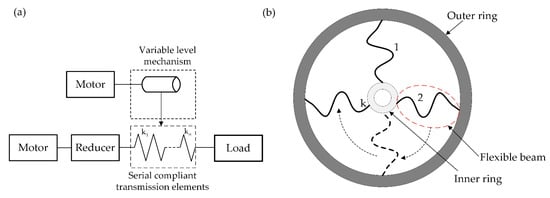
Figure 1
Open AccessArticle
Model-Based Control Allocation During State Transitions of a Variable Recruitment Fluidic Artificial Muscle Bundle
by
Jeong Yong Kim and Matthew Bryant
Actuators 2025, 14(5), 235; https://doi.org/10.3390/act14050235 - 8 May 2025
Abstract
A model-based control scheme for state transitions of a variable recruitment fluidic artificial muscle (FAM) bundle is developed and experimentally validated. FAMs can be bundled together in parallel to exhibit variable recruitment functionality, which is an activation strategy inspired by how motor units
[...] Read more.
A model-based control scheme for state transitions of a variable recruitment fluidic artificial muscle (FAM) bundle is developed and experimentally validated. FAMs can be bundled together in parallel to exhibit variable recruitment functionality, which is an activation strategy inspired by how motor units (MUs) in skeletal muscle are recruited. By adapting variable recruitment, an FAM bundle is able to operate efficiently over its entire force-contraction space while increasing control authority and bandwidth at low recruitment states. A variable recruitment bundle poses a hybrid control problem as it operates by controlling pressure as a continuous variable while simultaneously shifting between discrete recruitment states. During such state transitions, the bundle may experience a lag in strain if the shift timing is not properly anticipated. In this study, a model that captures the interaction effects between FAMs and a hydraulic system model is used to inform the controller of when a state transition should be made. The proposed control scheme is compared to a baseline control scheme that uses a percentage of the source pressure as the threshold for when a shift is made. The controller performance is evaluated by tracking a sinusoidal strain trajectory, and the average and maximum strain errors are compared between the baseline and proposed controller. The applied FAM pressures are presented to show that the model-based compensation is able to determine when a transition needs to be made. As a result, the tracking performance of the proposed control scheme is shown to significantly decrease the integrated absolute and maximum errors.
Full article
(This article belongs to the Special Issue Analysis and Design of Linear/Nonlinear Control System)
►▼
Show Figures
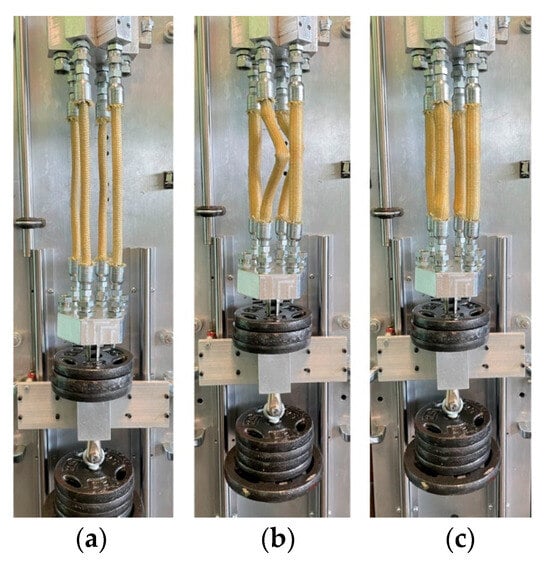
Figure 1
Open AccessArticle
Inner–Outer Loop Intelligent Morphology Optimization and Pursuit–Evasion Control for Space Modular Robot
by
Wenwei Luo, Ling Meng, Fei Feng, Pengyu Guo and Bo Li
Actuators 2025, 14(5), 234; https://doi.org/10.3390/act14050234 - 8 May 2025
Abstract
This paper proposes an inner–outer loop computational framework to address the morphology optimization and pursuit–evasion control problem for space modular robots. First, a morphological design space considering the functional characteristics of different modules is designed. Then, an elite genetic algorithm is applied to
[...] Read more.
This paper proposes an inner–outer loop computational framework to address the morphology optimization and pursuit–evasion control problem for space modular robots. First, a morphological design space considering the functional characteristics of different modules is designed. Then, an elite genetic algorithm is applied to evolve the morphology within this space, and a proximal policy optimization algorithm is applied to control the space modular robot with evolved morphology. Considering symmetry, centrality, module cost, and average cumulative reward, a comprehensive morphological assessment is proposed to evaluate the morphology. And the assessment result serves as the fitness of evolution. In addition, by implementing the algorithm on the JAX framework for parallel computing, the computational efficiency was significantly enhanced, allowing the entire optimization process within 17.3 h. Comparative simulation results verify the effectiveness and superiority of the proposed computational framework.
Full article
(This article belongs to the Special Issue Actuators in Robotic Control—3rd Edition)
►▼
Show Figures
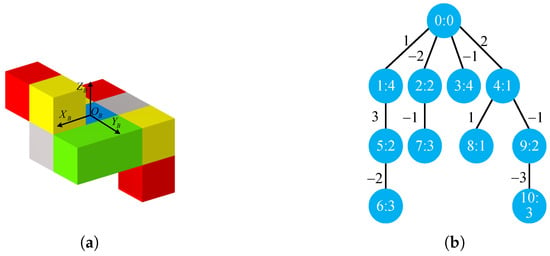
Figure 1
Open AccessArticle
A Novel Principle for Transparent Applications of Force Impulses in Cable-Driven Rehabilitation Systems
by
Andrej Olenšek, Matjaž Zadravec, Matej Tomc, Teja Krishna Mamidi, Vineet Vashista and Zlatko Matjačić
Actuators 2025, 14(5), 233; https://doi.org/10.3390/act14050233 - 7 May 2025
Abstract
A critical requirement for rehabilitation robots is achieving high transparency in user interaction to minimize interference when assistance is unnecessary. Cable-driven systems are a compelling alternative to rigid-link robots due to their lighter weight and reduced inertia, enhancing transparency. However, controlling cable tension
[...] Read more.
A critical requirement for rehabilitation robots is achieving high transparency in user interaction to minimize interference when assistance is unnecessary. Cable-driven systems are a compelling alternative to rigid-link robots due to their lighter weight and reduced inertia, enhancing transparency. However, controlling cable tension forces remains a significant challenge, as these forces directly affect the interaction between the user and the robot. Effective strategies must maintain low tension during non-assistive phases while preventing slackness. This paper introduces PACE-R (Passive Active CablE Robot), a novel lightweight actuation system for cable-driven rehabilitation devices. The PACE-R module utilizes remote actuation and an open-loop, discrete state control, where the cable is coupled to the motor only during active intervention. When not assisting, the cable is passively decoupled from the motor, and a low-stiffness spring maintains minimal tension, enabling high transparency. Benchtop tests showed that the module consistently produced force impulses proportional to motor input with delays not exceeding 15 ms. In the treadmill push-off assistance demonstration, PACE-R contributed about 20% to total ankle moment and power. Transparency analysis revealed negligible interference, with only 1% and 0.5% contributions to peak total ankle moment and power, respectively.
Full article
(This article belongs to the Special Issue Actuators and Robotic Devices for Rehabilitation and Assistance)
►▼
Show Figures
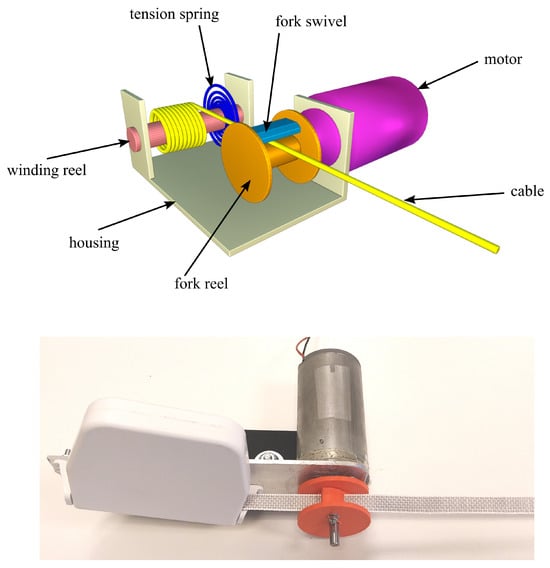
Figure 1
Open AccessArticle
Magnetically Actuated Microstructures with Programmable Degradation for Knee Cartilage Regeneration
by
Geonhui Mun, Shirong Zheng and Gwangjun Go
Actuators 2025, 14(5), 232; https://doi.org/10.3390/act14050232 - 6 May 2025
Abstract
Degenerative joint diseases, such as osteoarthritis, are increasingly prevalent in aging populations, yet current treatments like stem cell injections face limitations in targeted delivery and efficacy. In this study, we proposed a biodegradable magnetically actuated microstructure for knee cartilage regeneration. The microstructure is
[...] Read more.
Degenerative joint diseases, such as osteoarthritis, are increasingly prevalent in aging populations, yet current treatments like stem cell injections face limitations in targeted delivery and efficacy. In this study, we proposed a biodegradable magnetically actuated microstructure for knee cartilage regeneration. The microstructure is composed of calcium-crosslinked alginate hydrogel embedded with magnetic nanoparticles (MNPs), allowing for precise control using an external magnetic field generated by an electromagnetic actuation (EMA) system. Fabricated via a centrifugal micro-nozzle process, the microstructures exhibited tunable sizes and uniform morphology. The proposed microstructures were characterized for their morphological, chemical, and magnetic properties, and their biodegradability and targeting ability in a phosphate-buffered saline (PBS) environment were experimentally analyzed. Experimental results demonstrated that smaller microstructures degraded more rapidly and that fewer microstructures resulted in improved targeting accuracy. In contrast, microstructures clustered at the lesion site degraded more slowly, supporting sustained therapeutic release. These results suggest that the proposed system can enhance delivery precision, minimize off-target accumulation, and reduce inflammation risks associated with residual materials. The biodegradable magnetically actuated microstructures present a promising platform for minimally invasive and site-specific cartilage therapy.
Full article
(This article belongs to the Special Issue Micro- and Nanorobotics for Biomedical Applications)
►▼
Show Figures
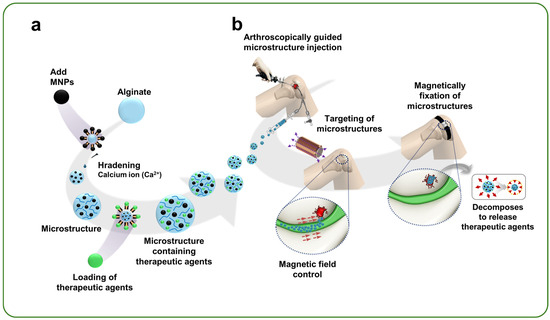
Figure 1
Open AccessArticle
Fixed-Time Adaptive Event-Triggered Control for Uncertain Nonlinear Systems Under Full-State Constraints
by
Yue Zhang, Jietao Dai, Zhenzhang Liu, Ruizhi Tang, Guoxiong Zheng and Jianhui Wang
Actuators 2025, 14(5), 231; https://doi.org/10.3390/act14050231 - 5 May 2025
Abstract
The problem of adaptive event-triggered control for uncertain nonlinear systems with full-state constraints was investigated. State constraints can significantly affect system performance, especially when time-varying external disturbances are present, potentially leading to instability. Thus, a fixed-time disturbance observer was designed. It estimated unknown
[...] Read more.
The problem of adaptive event-triggered control for uncertain nonlinear systems with full-state constraints was investigated. State constraints can significantly affect system performance, especially when time-varying external disturbances are present, potentially leading to instability. Thus, a fixed-time disturbance observer was designed. It estimated unknown uncertainties within a predetermined time. Meanwhile, an asymmetric barrier Lyapunov function was developed. It ensured the stability of the system state under constraints. Furthermore, to reduce the utilization rate of the system’s communication resources, an adaptive event-triggered control scheme was proposed, and an integrated control method was established to preset the convergence time of the system’s state error, greatly improving the convergence speed. Theoretical analysis and simulations demonstrated the effectiveness of the proposed approach. The results show that the system achieved stable control within a fixed time, even under full-state constraints and external disturbances, while using fewer communication resources.
Full article
(This article belongs to the Special Issue Adaptive Fault-Tolerant Control Strategies for Uncertain Nonlinear Systems: Mitigating Actuator Faults)
►▼
Show Figures
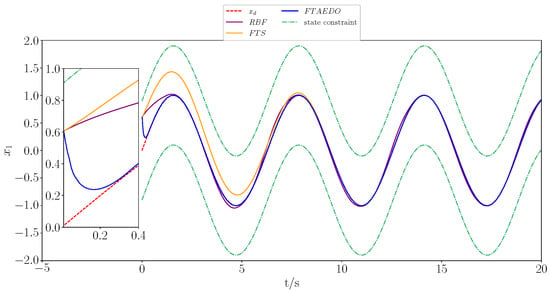
Figure 1
Open AccessArticle
Control of Active Suspension Systems Based on Mechanical Wave Concepts
by
Hossein Habibi
Actuators 2025, 14(5), 230; https://doi.org/10.3390/act14050230 - 5 May 2025
Abstract
Wave-based control (WBC) offers a relatively novel approach to the challenge of controlling flexible mechanisms by treating the interaction between actuator and system as the launch and absorption of mechanical waves. WBC is a robust approach but has been unexplored in active suspension
[...] Read more.
Wave-based control (WBC) offers a relatively novel approach to the challenge of controlling flexible mechanisms by treating the interaction between actuator and system as the launch and absorption of mechanical waves. WBC is a robust approach but has been unexplored in active suspension systems to date. This study adapts WBC to a quarter-car suspension model. Having embedded an actuator as the active element of a car suspension, a novel but simple ‘force impedance’ adaptation of WBC is introduced and implemented for effective vibration control. Testing with various input signals (pulse, sinusoidal, and random profile) highlights the active system’s significant ride comfort and rapid vibration suppression with zero steady-state error. Compared to two other models—one employing an ideal skyhook strategy and the other a passive suspension—the active system utilizing WBC outperforms across many criteria. The active controller achieves over 38% superior ride comfort compared to the skyhook model for a pulse road input. This is accomplished while adhering to WBC principles: relying solely on actuator-interface measurements, simplicity, cost-effectiveness, with no need for detailed system models, extensive sensors, or deep system knowledge.
Full article
(This article belongs to the Special Issue Industrial and Biomechanical Applications of Actuators and Robots and Eco-Sustainability)
►▼
Show Figures
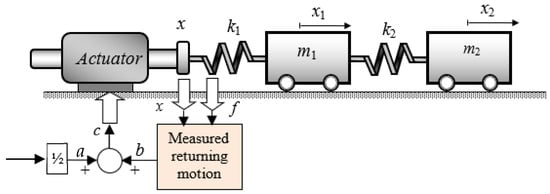
Figure 1
Open AccessArticle
Design, Fabrication, and Experimental Validation of Optical Microbots
by
Menaka Konara, Mishal Pokharel, Md Mainuddin Sagar, Yeongjin Kim and Kihan Park
Actuators 2025, 14(5), 229; https://doi.org/10.3390/act14050229 - 5 May 2025
Abstract
Light-actuated microbots have been studied as a viable tool for interacting with micro/nano environments. Considering their applicability to a wide range of biomedical applications, novel designs, fabrication techniques, and control methodologies are being developed. Especially, micro/nanoscale three-dimensional fabrication techniques have opened many possibilities
[...] Read more.
Light-actuated microbots have been studied as a viable tool for interacting with micro/nano environments. Considering their applicability to a wide range of biomedical applications, novel designs, fabrication techniques, and control methodologies are being developed. Especially, micro/nanoscale three-dimensional fabrication techniques have opened many possibilities for developing microbots with complex geometries using resins as materials. Here, we developed microbots that can be actuated with tightly focused laser beams to be used in targeted drug delivery, cell poking, and cell characterization studies. These microbots were fabricated in batches using two-photon polymerization (TPP). Each microbot utilizes a deposited metal layer inside its body to manipulate convective microfluidic flows. Additionally, micro-sized end effectors allow them to make measurable physical contact with biological objects. Their expected performance was evaluated using numerical simulations with the use of multiphysics software. Furthermore, laser-induced loading and unloading of micro-sized cargo show their capability for in vitro applications.
Full article
(This article belongs to the Special Issue Actuation and Biomedical Development of Micro/Nano Robotics)
►▼
Show Figures
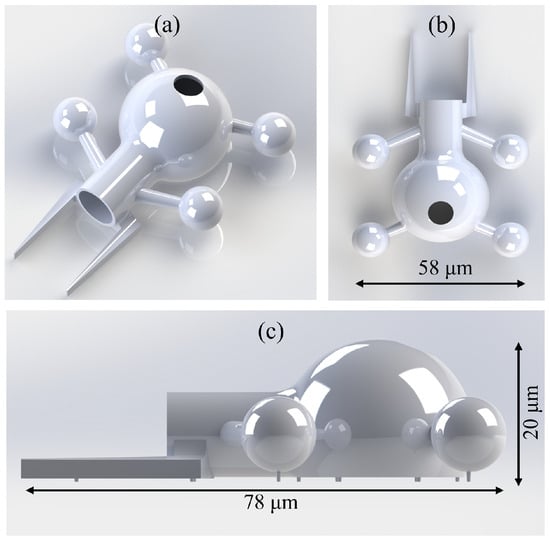
Figure 1
Open AccessArticle
A Two-Segment Continuum Robot with Piecewise Stiffness for Tracheal Intubation and Active Decoupling
by
Jianhao Tang, Lingfeng Sang, Junjie Tian, Qiqi Pan, Yuan Han, Wenxian Li, Yu Tian and Hongbo Wang
Actuators 2025, 14(5), 228; https://doi.org/10.3390/act14050228 - 5 May 2025
Abstract
This study presents a two-segment continuum robot with piecewise stiffness, designed to enhance the precision, adaptability, and safety of tracheal intubation procedures. The robot employs a continuum manipulator (CM) as its end-effector, featuring a proximal segment (PS) with an aluminum alloy interlocking joint,
[...] Read more.
This study presents a two-segment continuum robot with piecewise stiffness, designed to enhance the precision, adaptability, and safety of tracheal intubation procedures. The robot employs a continuum manipulator (CM) as its end-effector, featuring a proximal segment (PS) with an aluminum alloy interlocking joint, which provides high axial stiffness for stable insertion, and a distal segment (DS) with a micro-nano resin-based notched structure, offering increased flexibility and compliance to navigate complex anatomical structures such as the epiglottis and vocal cords, thereby reducing airway trauma. To describe the motion behavior of the robot, a piecewise variable curvature kinematic model is developed, capturing the deformation characteristics of each segment under actuation. Furthermore, a piecewise stiffness analysis is conducted to determine the axial and bending stiffness of each segment, ensuring an appropriate balance between stability and flexibility. To enhance control precision, an active tendon-driven decoupling control strategy is introduced, effectively minimizing the interaction forces between flexible segments and improving end-effector maneuverability. The results demonstrate that the proposed design significantly improves the adaptability of the tracheal intubation robot, ensuring controlled insertion while reducing the risk of excessive force on the airway walls. This study provides theoretical and technical insights into the mechanical design and control strategies of continuum robots, contributing to the safety and efficiency of tracheal intubation.
Full article
(This article belongs to the Special Issue Design and Application of Actuators with Multi-DOF Movement-2nd Edition)
►▼
Show Figures
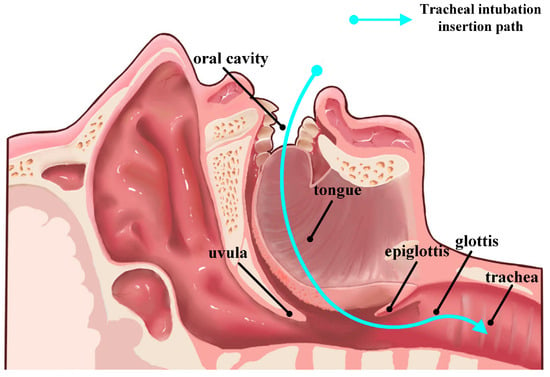
Figure 1
Open AccessArticle
Research on Active Lubrication Based on Piezoelectric Micropump
by
Zhiyuan Zhang, Yan Zhao, Long Lin, Yamen Wang, Xiuxin Shang and Kai Li
Actuators 2025, 14(5), 227; https://doi.org/10.3390/act14050227 - 2 May 2025
Abstract
This paper mainly introduces the problem of active lubrication. At present, the technology of active lubrication for bearings in micro-space is not mature, and it is difficult to meet the requirements of micro-space lubrication. A piezoelectric micropump for active lubrication is proposed in
[...] Read more.
This paper mainly introduces the problem of active lubrication. At present, the technology of active lubrication for bearings in micro-space is not mature, and it is difficult to meet the requirements of micro-space lubrication. A piezoelectric micropump for active lubrication is proposed in this paper. The micropump has the advantages of compactness, embedding, high precision, and fast response. We analyze the performance of the micropump under different characteristics. When the applied frequency is 9.95 kHz, the voltage is 200 V and the oil viscosity is 0.001 Pa·s, and the pumping capacity can reach 0.8 μL. When the same excitation signal is used, the experimental pumping capacity reaches 0.76 μL. The theoretical and experimental error is 5.3%. For different bearing conditions, combined with the theoretical model of minimum oil film thickness, we propose the number of pulses to meet the micro-redundancy lubrication under different working conditions. These analyses provide a theoretical basis for active lubrication in micro-space.
Full article
(This article belongs to the Special Issue Piezoelectric Ultrasonic Actuators and Motors)
►▼
Show Figures
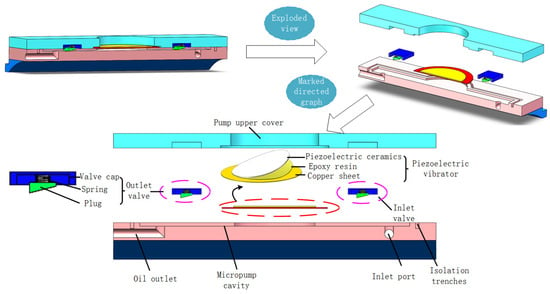
Figure 1
Open AccessArticle
Optimization of Unmanned Excavator Operation Trajectory Based on Improved Particle Swarm Optimization
by
Tingting Wang, Xiaohui He, Yunkang Zhou and Faming Shao
Actuators 2025, 14(5), 226; https://doi.org/10.3390/act14050226 - 1 May 2025
Abstract
To realize the autonomous operation of unmanned excavators, this study takes the four-axis manipulator arm of an unmanned excavator as the research object, uses the five-order B-spline curve for operation trajectory planning, and proposes an improved particle swarm optimization algorithm for the continuous
[...] Read more.
To realize the autonomous operation of unmanned excavators, this study takes the four-axis manipulator arm of an unmanned excavator as the research object, uses the five-order B-spline curve for operation trajectory planning, and proposes an improved particle swarm optimization algorithm for the continuous trajectory optimization problem of excavator single operation. The specific contents are as follows: based on the standard PSO algorithm, dynamic parameter update is used to enhance the global search ability in the early stage and improve the local search accuracy in the later stage; the diversity monitoring mechanism is enhanced to avoid premature maturity convergence; multi-particle SA perturbation is introduced, and the new solution is accepted according to the Metropolis criterion to enhance global search ability. The adaptive cooling rate flexibly responds to different search situations and improves the search efficiency and quality of the solution. To verify the effectiveness of the improved PSO–SA algorithm, this study compares it with the standard PSO algorithm, the standard PSO–SA algorithm, and the MPSO algorithm. The simulation results show that the improved PSO–SA algorithm can converge to the global optimal solution more quickly, has the shortest time in trajectory planning, and the generated trajectory has higher tracking accuracy, which ensures that the vibration and impact of the manipulator during motion are effectively suppressed.
Full article
(This article belongs to the Section Actuators for Surface Vehicles)
►▼
Show Figures
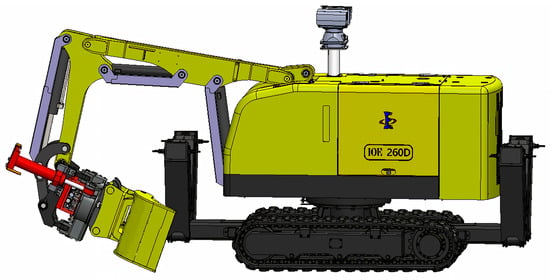
Figure 1
Open AccessArticle
Three-Dimensional Modelling and Validation for the Ultra-High-Speed EDS Rocket Sled with PM Halbach Array
by
Yongpan Hu, Baojun Chen, Guobin Lin and Zhiqiang Wang
Actuators 2025, 14(5), 225; https://doi.org/10.3390/act14050225 - 1 May 2025
Abstract
The ultra-high-speed rocket sled plays an important role in the ground test by simulating altitude flight. Rocket sleds can only be lifted for a short time with thermally uninsulated superconductors moving among an eddy-current-induced copper array. For the purpose of durable lifting, an
[...] Read more.
The ultra-high-speed rocket sled plays an important role in the ground test by simulating altitude flight. Rocket sleds can only be lifted for a short time with thermally uninsulated superconductors moving among an eddy-current-induced copper array. For the purpose of durable lifting, an electrodynamic suspension (EDS) with a permanent magnet (PM) Halbach array moving over a conductor plate can be adopted to upgrade the rocket sled. The earlier study built a two-dimensional (2D) model for the PM EDS system. Yet, 2D modelling in our earlier research ignored the magnetic field variation along both widths of the Halbach array and conductor plate. This resulted in a more than 50% error between the analytical electromagnetic forces with both the three-dimensional (3D) simulated and experimental results. To reduce the error, this paper puts forward more accurate analytical electromagnetic force formulas by a 3D modelling method encompassing both widths of the Halbach array and conductor plate. The 3D model was built by periodically extending the PM EDS system along both directions of the width and length. Then, by double Fourier series expansion and omitting high-order components, the electromagnetic forces can be approximated by brief formulas. Moreover, lift-to-weight and lift-to-drag optimization are discussed. Finally, the correctness of the 3D electromagnetic force formulas was verified by both the numerical simulation and experiment.
Full article
(This article belongs to the Special Issue Advanced Theory and Application of Magnetic Actuators—2nd Edition)
►▼
Show Figures
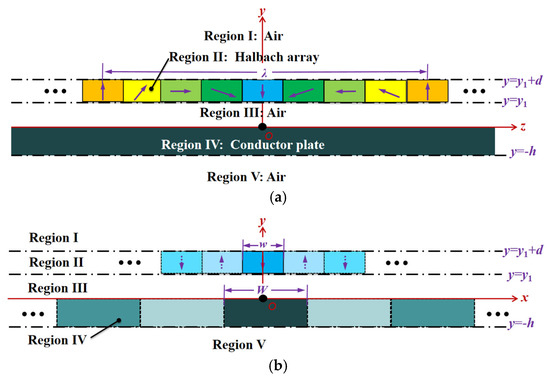
Figure 1
Open AccessArticle
Adaptive Navigation of a Smart Walker with Shared Control
by
Giuseppe Sutera, Dario Calogero Guastella, Francesco Cancelliere and Giovanni Muscato
Actuators 2025, 14(5), 224; https://doi.org/10.3390/act14050224 - 1 May 2025
Abstract
The global surge in the elderly population has increased the awareness of their needs. Supporting mobility and perception is vital to improving their quality of life. This project introduces a prototype of an active smart walker with obstacle avoidance and assistive navigation features
[...] Read more.
The global surge in the elderly population has increased the awareness of their needs. Supporting mobility and perception is vital to improving their quality of life. This project introduces a prototype of an active smart walker with obstacle avoidance and assistive navigation features to aid the elderly. The system can plan routes and move in familiar environments, adjusting its actions based on the user’s intentions. To accomplish this, a shared control approach employs a force–torque sensor to gauge the user’s will. The proposed system has been tested in multiple scenarios, replicating a common use in real-world environments.
Full article
(This article belongs to the Section Actuators for Robotics)
►▼
Show Figures
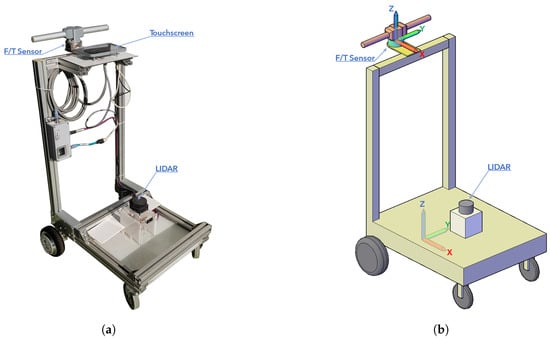
Figure 1
Open AccessArticle
A Novel Overactuated Quadrotor: Prototype Design, Modeling, and Control
by
Zhan Zhang, Yan Li, Hengzhi Jiang, Jieqi Li and Zhong Wang
Actuators 2025, 14(5), 223; https://doi.org/10.3390/act14050223 - 30 Apr 2025
Abstract
Traditional multirotor UAVs (unmanned aerial vehicles) are inherently underactuated, with coupled position and attitude control, which limits their maneuverability in specific applications. This paper presents a fully actuated quadrotor design based on a swashplateless rotor mechanism. Unlike existing fully actuated UAV designs that
[...] Read more.
Traditional multirotor UAVs (unmanned aerial vehicles) are inherently underactuated, with coupled position and attitude control, which limits their maneuverability in specific applications. This paper presents a fully actuated quadrotor design based on a swashplateless rotor mechanism. Unlike existing fully actuated UAV designs that rely on servo-driven tilt mechanisms, this approach minimizes additional weight and simplifies the structure, resulting in a more maintainable system. The design, modeling, and control strategies for the quadrotor are presented. Furthermore, we propose a decoupled control method to address the need for both fully actuated and underactuated modes. The control architecture employs parallel attitude and position control structures and decouples the two subsystems using a nonlinear dynamic inversion (NDI) method. A compensation module is introduced to address the constraints imposed by the maximum rotor deflection angle and the corresponding feasible force set. This compensation module actively adjusts the attitude to mitigate the saturation of the required thrust, effectively overcoming the impact of rotor deflection angle limitations on trajectory tracking performance. The approach facilitates seamless switching between fully actuated and underactuated modes, enhancing the system’s flexibility and robustness. Simulation and flight experiments demonstrate the effectiveness and performance of the proposed design.
Full article
(This article belongs to the Special Issue Actuation and Robust Control Technologies for Aerospace Applications)
►▼
Show Figures
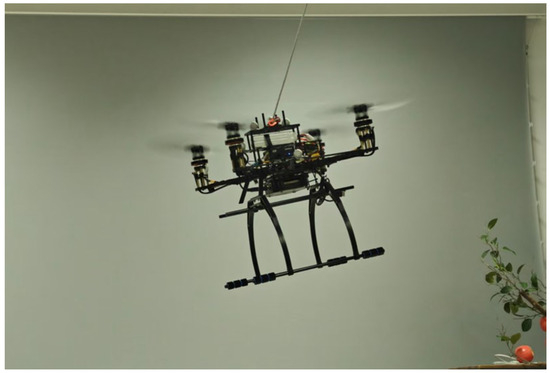
Figure 1
Open AccessArticle
Time-Varying Control Strategy for Asymmetric Thrust Flight of Multi-Engines Aircraft
by
Shuting Xu and Zhe Zhang
Actuators 2025, 14(5), 222; https://doi.org/10.3390/act14050222 - 29 Apr 2025
Abstract
This paper proposes a time-varying pilot control strategy, which is suitable for asymmetric thrust flight of multi-engine aircraft caused by single engine failure. To address the critical issue of lateral imbalance caused by thrust asymmetry, pilot control models for inner-loop attitude-heading control under
[...] Read more.
This paper proposes a time-varying pilot control strategy, which is suitable for asymmetric thrust flight of multi-engine aircraft caused by single engine failure. To address the critical issue of lateral imbalance caused by thrust asymmetry, pilot control models for inner-loop attitude-heading control under aileron input and command sideslip control under rudder input are developed. Taking the time-varying adaptive characteristics of the pilot and the changes in flight states induced by thrust asymmetry into account, an adaptive inner-loop attitude-heading control logic and a command sideslip control strategy are proposed. Subsequently, a time-varying pilot lateral control strategy model is established. Simulation results demonstrate that the proposed time-varying control strategy ensures stable and controllable heading and flight attitude effectively. When compared with human-in-the-loop flight experiments, the time-domain results reveal that the flight states exhibit similar trends. A time-varying aircraft-pilot couplings evaluation indicates a reduced susceptibility to pilot-induced oscillations, with both systems showing consistent behavior, verifying the reliability of the proposed time-varying control strategy. The proposed pilot model can assist and guide the pilot in completing control tasks during single-engine failure.
Full article
(This article belongs to the Section Aerospace Actuators)
►▼
Show Figures
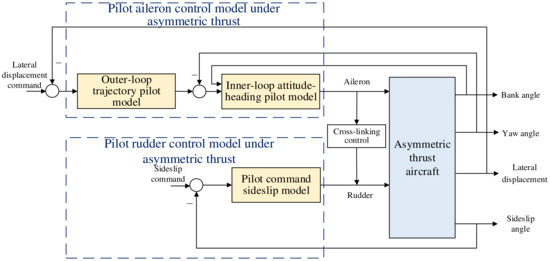
Figure 1

Journal Menu
► ▼ Journal Menu-
- Actuators Home
- Aims & Scope
- Editorial Board
- Reviewer Board
- Topical Advisory Panel
- Instructions for Authors
- Special Issues
- Topics
- Sections
- Article Processing Charge
- Indexing & Archiving
- Editor’s Choice Articles
- Most Cited & Viewed
- Journal Statistics
- Journal History
- Journal Awards
- Conferences
- Editorial Office
Journal Browser
► ▼ Journal BrowserHighly Accessed Articles
Latest Books
E-Mail Alert
News
Topics
Topic in
Actuators, Applied Sciences, Entropy
Thermodynamics and Heat Transfers in Vacuum Tube Trains (Hyperloop)
Topic Editors: Suyong Choi, Minki Cho, Jungyoul LimDeadline: 30 July 2025
Topic in
Actuators, Algorithms, BDCC, Future Internet, JMMP, Machines, Robotics, Systems
Smart Product Design and Manufacturing on Industrial Internet
Topic Editors: Pingyu Jiang, Jihong Liu, Ying Liu, Jihong YanDeadline: 31 December 2025
Topic in
Actuators, Automation, Electronics, Machines, Robotics, Eng, Technologies
New Trends in Robotics: Automation and Autonomous Systems
Topic Editors: Maki Habib, Fusaomi NagataDeadline: 31 January 2026

Conferences
Special Issues
Special Issue in
Actuators
Control and Dynamics of Unmanned Aerial Vehicles
Guest Editors: Kenji Uchiyama, Kai MasudaDeadline: 15 May 2025
Special Issue in
Actuators
Advanced Theory and Application of Magnetic Actuators—2nd Edition
Guest Editors: Zhiqiang Long, Feng Sun, Jin Zhou, Suyuan Yu, Ran Zhou, Chuan ZhaoDeadline: 20 May 2025
Special Issue in
Actuators
Bioinspired Structures for Soft Robots
Guest Editors: Yanhong Peng, Fangchao Hu, Yi LiDeadline: 30 May 2025
Special Issue in
Actuators
Micro/Nano Manipulation and Its Applications in Fabrication
Guest Editor: Junhui HuDeadline: 31 May 2025








